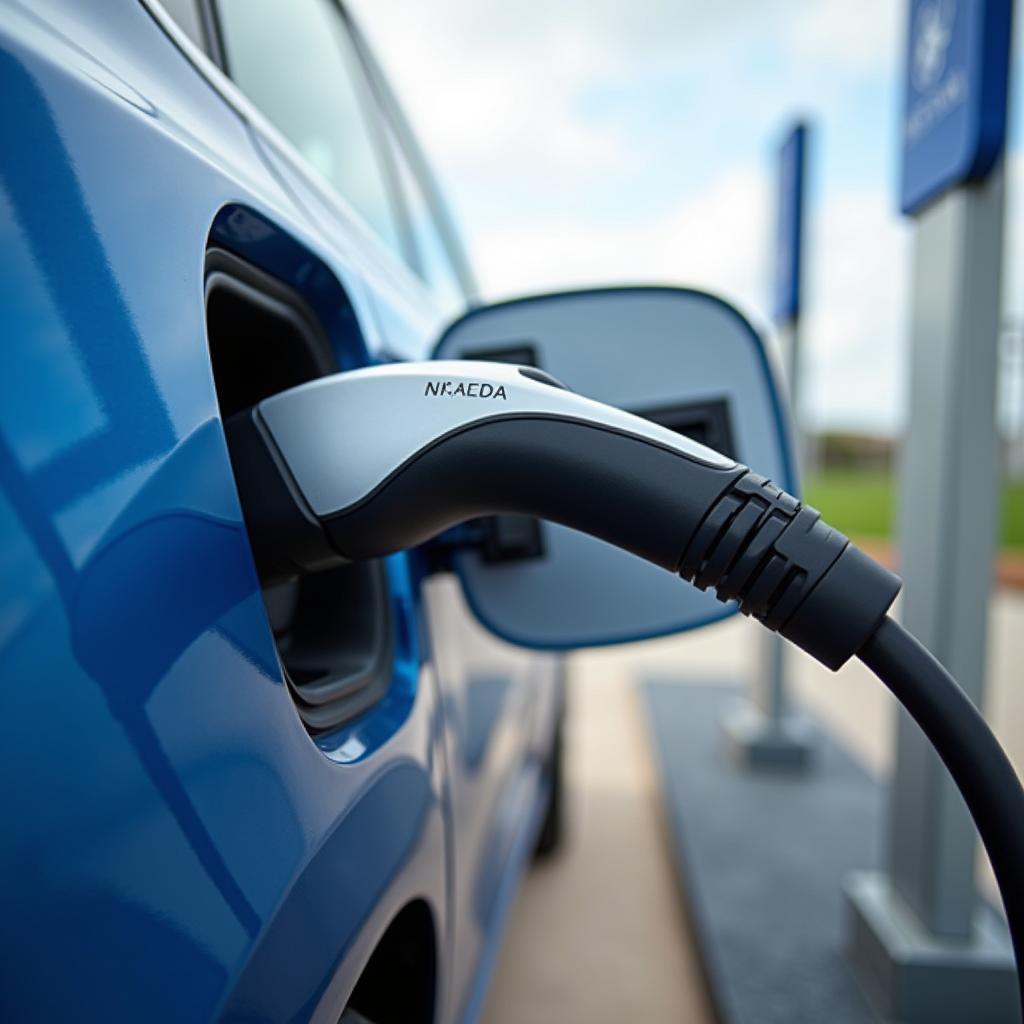Welcome to our IELTS Reading practice test focused on the topic of “How Smart Cities Are Reducing Urban Pollution.” This comprehensive test will help you prepare for the IELTS Reading section by providing realistic passages and questions that mirror the actual exam. Let’s dive into the world of smart cities and their innovative solutions to combat urban pollution.
Table Of Contents
- Introduction
- IELTS Reading Practice Test
- Passage 1 – Easy Text
- Smart Cities: A Breath of Fresh Air
- Questions 1-5
- Questions 6-10
- Passage 2 – Medium Text
- The Role of Big Data in Pollution Reduction
- Questions 11-15
- Questions 16-20
- Passage 3 – Hard Text
- The Synergy of Artificial Intelligence and Internet of Things in Smart City Pollution Control
- Questions 21-26
- Questions 27-33
- Questions 34-40
- Answer Key
- Passage 1
- Passage 2
- Passage 3
- Conclusion
Introduction
Urban pollution is a growing concern in cities worldwide, and smart city initiatives are at the forefront of addressing this challenge. This practice test will explore various aspects of how smart cities are implementing cutting-edge technologies and strategies to reduce pollution and improve the quality of life for their residents.
IELTS Reading Practice Test
Passage 1 – Easy Text
Smart Cities: A Breath of Fresh Air
Smart cities are revolutionizing the way we combat urban pollution. By leveraging advanced technologies and data-driven approaches, these innovative urban centers are implementing a wide range of solutions to mitigate the harmful effects of pollution on both the environment and human health.
One of the key strategies employed by smart cities is the use of IoT (Internet of Things) sensors to monitor air quality in real-time. These sensors are strategically placed throughout the city, collecting data on various pollutants such as particulate matter, nitrogen dioxide, and carbon monoxide. This information is then analyzed and used to inform decision-making processes and trigger automated responses when pollution levels exceed predetermined thresholds.
Smart traffic management systems are another crucial component in the fight against urban pollution. By optimizing traffic flow and reducing congestion, these systems help to decrease vehicle emissions and improve overall air quality. Adaptive traffic lights, which adjust their timing based on real-time traffic conditions, are becoming increasingly common in smart cities. These intelligent systems can significantly reduce idle time at intersections, leading to lower fuel consumption and fewer emissions.
Green spaces play a vital role in improving air quality and reducing the urban heat island effect. Smart cities are incorporating innovative urban planning techniques to increase the presence of parks, green roofs, and vertical gardens. These green areas not only absorb carbon dioxide and filter pollutants but also provide much-needed recreational spaces for city dwellers.
 Smart City Park
Smart City Park
The promotion of sustainable transportation options is another key aspect of smart city initiatives. Electric vehicle (EV) infrastructure is being rapidly expanded, with charging stations becoming more prevalent throughout urban areas. Additionally, smart bike-sharing programs and improved public transportation systems are encouraging residents to choose eco-friendly alternatives to private cars.
By combining these various strategies and technologies, smart cities are making significant strides in reducing urban pollution and creating healthier, more livable environments for their residents.
Questions 1-5
Do the following statements agree with the information given in the passage?
Write
TRUE if the statement agrees with the information
FALSE if the statement contradicts the information
NOT GIVEN if there is no information on this
- Smart cities use IoT sensors to monitor air quality in real-time.
- Adaptive traffic lights always reduce traffic congestion in smart cities.
- Green spaces in smart cities help absorb carbon dioxide and filter pollutants.
- All residents in smart cities prefer using electric vehicles over traditional cars.
- Smart cities are implementing multiple strategies simultaneously to combat urban pollution.
Questions 6-10
Complete the sentences below.
Choose NO MORE THAN TWO WORDS from the passage for each answer.
- Smart traffic management systems help to decrease vehicle emissions and improve .
- Intelligent traffic systems can reduce at intersections, leading to lower fuel consumption.
- Smart cities are using ___ techniques to increase the presence of parks and green spaces.
- The expansion of infrastructure is making it easier for people to use eco-friendly transportation.
- By combining various strategies, smart cities are creating ___, more livable environments for their residents.
Passage 2 – Medium Text
The Role of Big Data in Pollution Reduction
The exponential growth of data generation and collection in smart cities has opened up new avenues for tackling urban pollution. Big data analytics is playing a pivotal role in helping city planners and environmental agencies make informed decisions and implement targeted strategies to reduce pollution levels.
One of the most significant applications of big data in pollution reduction is predictive modeling. By analyzing historical data on pollution levels, weather patterns, and human activities, smart cities can forecast potential pollution hotspots and take proactive measures to mitigate their impact. For instance, if a model predicts high levels of air pollution in a particular area due to expected traffic congestion, city officials can implement temporary traffic diversions or encourage the use of public transportation to alleviate the problem.
Big data is also enabling smart cities to identify the root causes of pollution more accurately. By correlating data from various sources such as traffic patterns, industrial activities, and energy consumption, cities can pinpoint the primary contributors to pollution in different areas. This granular understanding allows for the development of targeted interventions that address specific pollution sources rather than applying blanket solutions.
The integration of citizen-generated data is another powerful tool in the smart city arsenal. Many cities are encouraging residents to participate in pollution monitoring through smartphone apps and low-cost sensors. This crowdsourced data, when combined with official measurements, provides a more comprehensive and real-time picture of pollution levels across the city. It also fosters a sense of community engagement and raises awareness about environmental issues among the population.
Smart cities are also leveraging big data to optimize waste management systems, which can significantly impact air and water pollution. Advanced analytics are being used to optimize garbage collection routes, predict waste generation patterns, and improve recycling rates. Some cities are implementing smart bins equipped with sensors that alert waste management services when they need to be emptied, reducing unnecessary truck trips and associated emissions.
The energy sector is another area where big data is driving pollution reduction efforts. Smart grids use data analytics to balance energy supply and demand more efficiently, reducing waste and lowering the carbon footprint of power generation. Additionally, big data is helping cities identify opportunities for increasing renewable energy adoption and improving energy efficiency in buildings.
While the potential of big data in reducing urban pollution is immense, it also presents challenges related to data privacy, security, and the digital divide. Smart cities must strike a balance between harnessing the power of data and protecting the rights and interests of their citizens. As technology continues to evolve, the role of big data in creating cleaner, more sustainable urban environments is likely to expand, offering exciting possibilities for the future of smart cities.
Questions 11-15
Choose the correct letter, A, B, C, or D.
-
According to the passage, predictive modeling in smart cities is used to:
A) Increase data collection from various sources
B) Forecast potential pollution hotspots
C) Implement permanent traffic diversions
D) Encourage the use of private vehicles -
The integration of citizen-generated data in pollution monitoring:
A) Replaces official measurements entirely
B) Is less accurate than traditional methods
C) Provides a more comprehensive picture of pollution levels
D) Is discouraged by city officials -
Smart waste management systems in cities aim to:
A) Increase the number of truck trips for garbage collection
B) Reduce recycling rates
C) Optimize garbage collection routes
D) Ignore waste generation patterns -
In the energy sector, big data analytics is used to:
A) Increase energy waste
B) Balance energy supply and demand more efficiently
C) Discourage the adoption of renewable energy
D) Increase the carbon footprint of power generation -
The passage suggests that the use of big data in smart cities:
A) Has no challenges or drawbacks
B) Should be avoided due to privacy concerns
C) Presents both opportunities and challenges
D) Is not effective in reducing urban pollution
Questions 16-20
Complete the summary below.
Choose NO MORE THAN TWO WORDS from the passage for each answer.
Big data analytics is revolutionizing pollution reduction efforts in smart cities. By using (16) , cities can forecast pollution hotspots and take proactive measures. The analysis of data from various sources helps identify the (17) of pollution, enabling targeted interventions. Cities are also encouraging (18) in pollution monitoring through apps and sensors. In waste management, (19) optimize collection routes and improve recycling rates. The energy sector benefits from smart grids that use data to balance supply and demand, reducing waste and lowering the (20) of power generation.
Passage 3 – Hard Text
The Synergy of Artificial Intelligence and Internet of Things in Smart City Pollution Control
The convergence of Artificial Intelligence (AI) and the Internet of Things (IoT) is ushering in a new era of urban pollution control in smart cities. This powerful combination is enabling unprecedented levels of environmental monitoring, analysis, and responsive action, fundamentally transforming how cities approach the complex challenge of pollution reduction.
At the heart of this synergy is the vast network of IoT sensors deployed throughout smart cities. These sensors continuously collect granular data on various environmental parameters, including air quality, water pollution, noise levels, and even soil contamination. The sheer volume and variety of data generated by these sensors would be overwhelming for traditional analysis methods. This is where AI, particularly machine learning algorithms, comes into play, sifting through the data to identify patterns, anomalies, and correlations that would be imperceptible to human analysts.
One of the most promising applications of AI in this context is predictive maintenance of pollution control infrastructure. By analyzing sensor data and historical performance records, AI systems can predict when air filters, water treatment facilities, or other pollution control equipment are likely to fail or require maintenance. This proactive approach not only ensures the consistent operation of pollution control measures but also optimizes resource allocation by scheduling maintenance only when necessary.
 AI Pollution Control
AI Pollution Control
AI-powered computer vision systems are being employed to monitor and enforce environmental regulations more effectively. For instance, these systems can analyze satellite imagery or drone footage to detect illegal dumping sites, monitor deforestation, or identify industrial facilities exceeding emission limits. The ability to process vast amounts of visual data in real-time allows for rapid response to environmental violations, significantly enhancing the effectiveness of regulatory efforts.
The integration of natural language processing (NLP) technologies is facilitating better communication between smart city systems and residents. AI-powered chatbots and virtual assistants can provide real-time information on pollution levels, offer personalized advice on reducing individual environmental impact, and even collect citizen feedback on environmental initiatives. This two-way communication channel not only raises awareness but also fosters a sense of collective responsibility for environmental stewardship.
Perhaps one of the most sophisticated applications of AI in pollution control is the development of holistic environmental models. These models integrate data from various sources – IoT sensors, satellite imagery, weather forecasts, traffic patterns, and even social media sentiment – to create comprehensive simulations of a city’s environmental dynamics. City planners can use these models to run “what-if” scenarios, testing the potential impact of different policies or infrastructure changes before implementation. This data-driven approach to decision-making significantly increases the likelihood of successful pollution reduction strategies.
The AI-IoT synergy is also revolutionizing energy management in smart cities, a critical factor in reducing overall pollution levels. Smart grids enhanced with AI can predict energy demand with remarkable accuracy, allowing for more efficient integration of renewable energy sources and reducing reliance on polluting fossil fuels. Moreover, AI algorithms can optimize energy distribution across the city, minimizing losses and reducing the need for excess power generation.
While the potential of AI and IoT in urban pollution control is immense, it is not without challenges. Ethical considerations surrounding data privacy and the potential for surveillance must be carefully addressed. Additionally, the digital divide within cities could lead to uneven distribution of the benefits of these technologies. Smart cities must strive to ensure that pollution reduction efforts powered by AI and IoT are implemented equitably across all neighborhoods and communities.
As these technologies continue to evolve, we can anticipate even more innovative applications in the fight against urban pollution. From AI-optimized urban planning that maximizes green spaces and natural air purification, to IoT-enabled circular economy systems that minimize waste generation, the future of smart cities holds exciting possibilities for creating cleaner, healthier, and more sustainable urban environments.
The synergy of AI and IoT in smart city pollution control represents a paradigm shift in our approach to urban environmental challenges. By harnessing the power of data, advanced analytics, and automated systems, smart cities are not just reacting to pollution problems but proactively shaping a cleaner, more sustainable future for urban dwellers worldwide.
Questions 21-26
Complete the sentences below.
Choose NO MORE THAN TWO WORDS from the passage for each answer.
-
IoT sensors in smart cities collect on various environmental parameters.
-
AI systems can predict when pollution control equipment will require .
-
systems powered by AI can analyze satellite imagery to detect environmental violations.
-
The integration of ___ technologies facilitates better communication between smart city systems and residents.
-
City planners use ___ to simulate a city’s environmental dynamics and test different scenarios.
-
Smart grids enhanced with AI can predict with high accuracy, allowing for better integration of renewable energy sources.
Questions 27-33
Do the following statements agree with the information given in the passage?
Write
TRUE if the statement agrees with the information
FALSE if the statement contradicts the information
NOT GIVEN if there is no information on this
-
AI and IoT technologies are only useful for monitoring air pollution in smart cities.
-
Predictive maintenance of pollution control infrastructure helps optimize resource allocation.
-
AI-powered chatbots can provide real-time information on pollution levels to city residents.
-
The use of AI and IoT in smart cities has no ethical considerations or challenges.
-
Smart grids with AI can completely eliminate the need for fossil fuels in energy production.
-
The digital divide in cities could lead to uneven distribution of benefits from AI and IoT technologies.
-
AI-optimized urban planning always results in a decrease in green spaces within cities.
Questions 34-40
Complete the summary below.
Choose NO MORE THAN TWO WORDS from the passage for each answer.
The synergy of AI and IoT is revolutionizing pollution control in smart cities. IoT sensors collect vast amounts of environmental data, which AI algorithms analyze to identify patterns and anomalies. This combination enables (34) of pollution control equipment, enhancing operational efficiency. AI-powered (35) systems monitor environmental regulations by analyzing visual data from various sources. The integration of (36) ___ technology improves communication with residents, providing real-time information and collecting feedback.
Smart cities use (37) to simulate environmental dynamics and test different scenarios before implementing policies. In energy management, AI enhances smart grids to predict (38) accurately, facilitating the integration of renewable energy sources. However, the implementation of these technologies faces challenges related to (39) ___ and the potential for uneven benefit distribution due to the digital divide.
Future applications may include AI-optimized urban planning and (40) ___ that minimize waste generation, contributing to cleaner and more sustainable urban environments.
Answer Key
Passage 1
- TRUE
- NOT GIVEN
- TRUE
- NOT GIVEN
- TRUE
- overall air
- idle time
- innovative urban planning
- electric vehicle
- healthier
Passage 2
- B
- C
- C
- B
- C
- predictive modeling
- root causes
- citizen participation
- advanced analytics
- carbon footprint
Passage 3
- granular data
- predictive maintenance
- Computer vision
- natural language processing
- holistic environmental models
- energy demand
- FALSE
- TRUE
- TRUE
- FALSE
- FALSE
- TRUE
- FALSE
- predictive maintenance
- computer vision
- natural language processing
- holistic environmental models
- energy demand
- ethical considerations
- IoT-enabled circular economy
Conclusion
This IELTS Reading practice test has explored the fascinating topic of how smart cities are reducing urban pollution. By tackling this challenging subject, you’ve not only improved your reading comprehension skills but also gained valuable insights into the innovative solutions being implemented in modern urban environments.
Remember, success in the IELTS Reading section requires practice and familiarity with various question types. Keep honing your skills by attempting diverse practice tests and expanding your vocabulary, especially in topics related to technology, environment, and urban planning.
For more practice and insights on related topics, you might find these articles helpful:
- Impact of Urbanization on Public Transportation Networks
- How Urbanization is Influencing Transportation Systems
- How Can Local Governments Promote Sustainable Urban Planning?
Keep practicing, stay curious, and good luck with your IELTS preparation!



